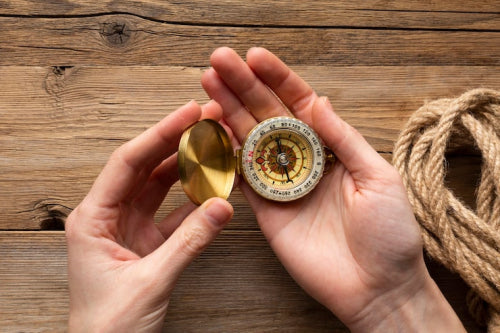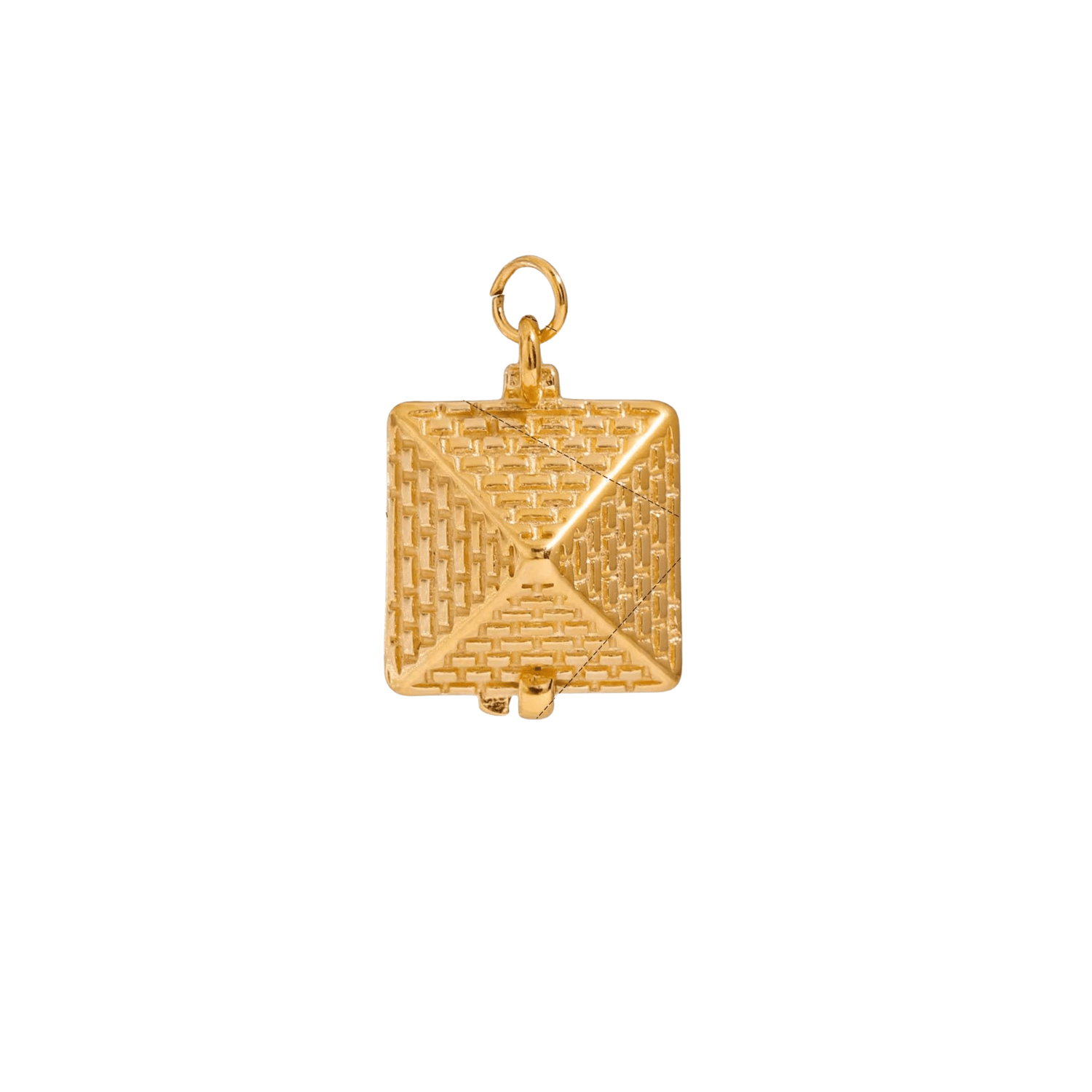
Quality of Life Emblems in Stackable Ring Sets
Share
In the vibrant bazaars of Mumbai and the sleek online platforms of Delhi, a subtle yet profound shift is transforming India's jewelry landscape. Stackable ring sets, traditionally viewed as simple adornments, are now powerful symbols of personal identity, wellness, and ambition. For India's young urbanites, these slender bands frequently featuring motifs such as the lotus or the tree of life transcend mere aesthetics. They serve as personal narratives, embodying values from environmental stewardship to individual empowerment. In a nation where jewelry has long held deep cultural significance, stackable rings are revolutionizing personal expression for the modern era.
Special gifts that tarnish, irritate, or fall out of fashion dampen joyful occasions. That disappointment clouds memories meant to endure. Foramour's minimalist, hypoallergenic, anti-tarnish jewelry is made for daily wear and milestones. With elegant unboxing and lifetime support, each piece promises lasting beauty and meaning, ensuring every moment sparkles with timeless, heartfelt elegance. Shop Now!
From Mere Decoration to Symbols of Aspiration
India's gems and jewelry sector remains a cornerstone of the national economy, accounting for a significant share of GDP. Valued at over USD 100 billion in 2024, the market is on a strong growth trajectory, driven by rising domestic demand, expanding export opportunities, and increasing adoption of modern retail and digital channels. This expansion highlights both the economic importance of the sector and its evolving role in catering to changing consumer tastes.This growth underscores the sector's dynamism, but within it, stackable rings are establishing a distinctive position. Contrasting with the elaborate gold ensembles typical of weddings, these adaptable, lightweight rings captivate millennials and Gen Z in major and emerging cities like Bengaluru and Pune. They represent accessible luxury, suitable for professional settings or festive events like Diwali. Their true distinction lies in their symbolism each band, perhaps inscribed with geometric designs denoting harmony or lotuses signifying enlightenment, weaves a personalized tale chosen by the owner.
This evolution mirrors a wider movement: Younger Indian consumers are gravitating toward jewelry that aligns with their principles. Fashion jewelry, increasingly favored for daily use, allows for subtle yet meaningful statements over flashy opulence. Stackable rings embody this ideal, providing infinite arrangements that enable users to showcase their uniqueness be it a sleek minimalist array for the office or a vibrant, diverse collection for celebrations. As digital natives, these consumers leverage online platforms to explore and acquire such pieces, fueling the sector's digital transformation.
The Essence of Self-Expression
The ascent of stackable rings aligns with a worldwide push for bespoke jewelry, yet in India, it is profoundly intertwined with local heritage. Direct-to-consumer brands such as Melorra and Giva are capitalizing on this by positioning stackable rings as everyday indulgences for ambitious professionals. Their lines often draw from indigenous symbols like lotus blooms for rejuvenation or tree-of-life patterns for prosperity that strike a chord with those desiring purposeful acquisitions. Recent insights reveal that 50-60% of jewelry purchases in India are influenced by online channels, highlighting the digital sway on consumer choices. This pattern intensifies during holidays like Diwali, where stackable rings serve as considerate presents embodying cultural resonance.
Social media has amplified this phenomenon dramatically. On sites like Instagram and Pinterest, where trendsetters and stars display meticulously arranged ring ensembles, stackable rings have achieved widespread appeal. A recent analysis indicates that the global stacking rings with textures market achieved USD 2.68 billion in 2024, propelled by the desire for handcrafted items boasting distinctive surfaces such as hammered or braided finishes. In India, this manifests as heightened interest in artisanal rings that appear custom-made, even via virtual shopping. E-commerce has equalized opportunities, enabling residents in locales like Jaipur or Lucknow to peruse and tailor their selections remotely. The market's growth is further supported by e-commerce's expansion, allowing for home-based browsing, customization, and buying, with social platforms playing a crucial role in trend dissemination through influencer showcases.
Embracing Sustainability
Sustainability emerges as a key catalyst in the stackable ring surge, resonating with India's environmentally aware younger demographic. Established names like Tanishq are advancing this by featuring lines crafted from responsibly obtained or repurposed metals. This dovetails with international patterns, as evidenced by reports showing the global stacking ring market valued at $2.1 billion in 2024, anticipated to expand to $4.3 billion by 2033 with an 8.1% CAGR. Such expansion is driven by preferences for environmentally sound, tailorable jewelry, a view mirrored in India where transparency in procurement is increasingly prized. For example, rings incorporating recycled silver or cultivated gems are popular among city dwellers pursuing elegance sans ecological harm.
Beyond raw materials, sustainability encompasses adaptability. Stackable rings inherently promote multiple wear styles, diminishing the urge for frequent buys. One assortment can be rearranged for varied events, proving economical for India's cost-aware middle-income group. This fusion of significance, fashion, and eco-responsibility deepens the allure of stackable rings. Moreover, trends point to a 15–20% yearly increase in demand for green alternatives through 2026, urging brands to adopt recycled metals and ethical practices. Ethical sourcing matters to 68% of millennials, reinforcing the shift toward conscious consumption in jewelry.
Navigating Market Challenges
Amid their rising fame, stackable rings encounter obstacles in India's intricate jewelry arena. Cost awareness poses a primary barrier; while metropolitan buyers are eager for significant items, they demand value without quality trade-offs. This compels companies to equilibrium artistry and pricing. Counterfeits present another hazard, especially in informal markets, where inferior duplicates can undermine confidence.
An awareness deficit persists as well. Numerous purchasers in secondary and tertiary urban areas link emblematic jewelry to elite labels, restricting broader adoption. Logistical hurdles in procuring morally extracted metals complicate matters further in India. Nonetheless, these issues are addressable, particularly through online avenues and creative promotion that close divides. Sizing concerns also surface, with critiques noting inaccuracies leading to returns; offering flexible options could mitigate this, enhancing satisfaction.
Unlocking Growth Potential
Prospects for stackable rings in India gleam brightly, brimming with possibilities. AI-enhanced personalization is reshaping retail encounters, with virtual platforms testing ring assemblers that permit clientele to craft unique blends, elevating involvement and revenues. This innovation resonates with India's tech-savvy youth, who cherish bespoke ease. Seasonal patterns also influence sales, with spikes in sterling silver birthstone rings during January and gold variants in February, often tied to gifting (over 57% of buys). Brands should strategize for peaks around Mother's Day and year-end festivities.
Business gifting offers fresh terrain. Wellness or empowerment-focused stackable rings are integrating into staff appreciation initiatives, providing substantial substitutes for commonplace offerings. Concurrently, secondary hubs like Pune and Jaipur are blossoming, propelled by escalating earnings. Online venues such as Myntra and Amazon India witness robust increases in stackable ring transactions amid holidays, a trajectory set to persist with e-commerce's ascent. Factors boosting popularity include thin gold bands, mixed metals, and textural contrasts, with personalization via birthstones and engravings swaying 54% of decisions.
A Tapestry of Future Significance
Forward-looking, analysts foresee stackable rings as a thriving segment in India's jewelry domain, with the overall market eyeing USD 168.62 billion by 2030. Merging health-inspired designs, green substances, and budget-friendly opulence will propel this ascent. Successful merchants will harness India's abundant symbolic heritage alongside digital advancements. A band adorned with a lotus or geometric form transcends acquisition it's an affirmation of self, acknowledging ideals like equilibrium and durability.
In India, where adornments perpetually exceed superficiality, stackable rings are authoring a fresh chapter. They embody aspirational existence, donned by a cohort that discerns allure in profundity. As these bands accumulate on digits nationwide, they forge a saga of distinctiveness, layer upon layer.
Frequently Asked Questions
What makes stackable rings symbols of personal identity and wellness in India?
Stackable rings have evolved beyond mere decoration to become powerful symbols of personal identity, wellness, and ambition for India's young urbanites. These rings often feature meaningful motifs like lotus flowers for enlightenment or tree-of-life patterns for prosperity, allowing wearers to create personalized narratives that reflect their values from environmental stewardship to individual empowerment. Each band tells a story chosen by the owner, making them accessible luxury pieces suitable for both professional settings and festive occasions like Diwali.
How do stackable rings align with sustainable and ethical jewelry trends?
Stackable rings cater to India's environmentally conscious younger demographic through sustainable practices and materials. Major brands like Tanishq now offer rings crafted from responsibly sourced or recycled metals, with ethical sourcing mattering to 68% of millennials. The inherent versatility of stackable rings promotes multiple wear styles, reducing the need for frequent purchases and proving economical for India's cost-aware middle-income consumers while supporting the 15-20% yearly increase in demand for eco-friendly jewelry alternatives.
What factors are driving the growth of the stackable ring market in India?
The stackable ring market in India is experiencing significant growth driven by digital transformation, with 50-60% of jewelry purchases influenced by online channels. Social media platforms like Instagram and Pinterest have amplified their popularity through influencer showcases, while AI-enhanced personalization and virtual ring assemblers are reshaping retail experiences. The market benefits from seasonal patterns, business gifting opportunities, and expansion into secondary cities like Pune and Jaipur, with factors like thin gold bands, mixed metals, and personalized birthstone engravings influencing 54% of purchasing decisions.
Disclaimer: The above helpful resources content contains personal opinions and experiences. The information provided is for general knowledge and does not constitute professional advice.
You may also be interested in: Warranties Become Standard in Premium Fashion Jewellery
Special gifts that tarnish, irritate, or fall out of fashion dampen joyful occasions. That disappointment clouds memories meant to endure. Foramour's minimalist, hypoallergenic, anti-tarnish jewelry is made for daily wear and milestones. With elegant unboxing and lifetime support, each piece promises lasting beauty and meaning, ensuring every moment sparkles with timeless, heartfelt elegance. Shop Now!
Powered by flareAI.co

